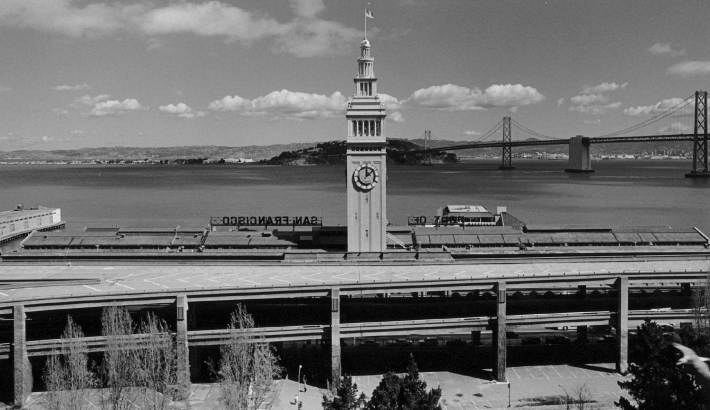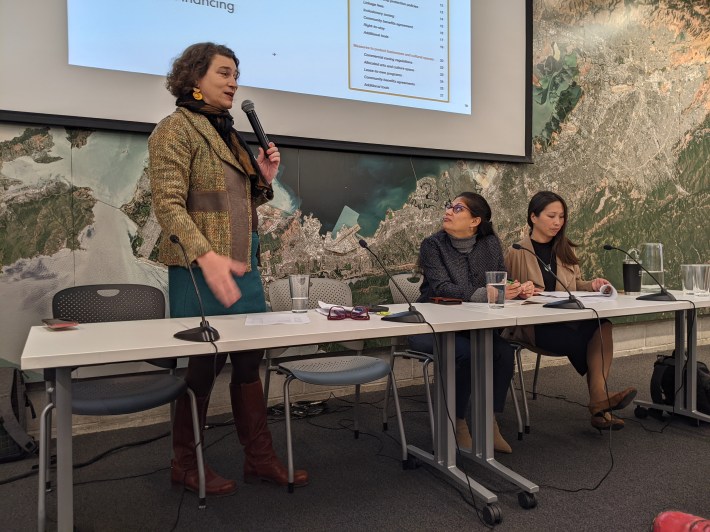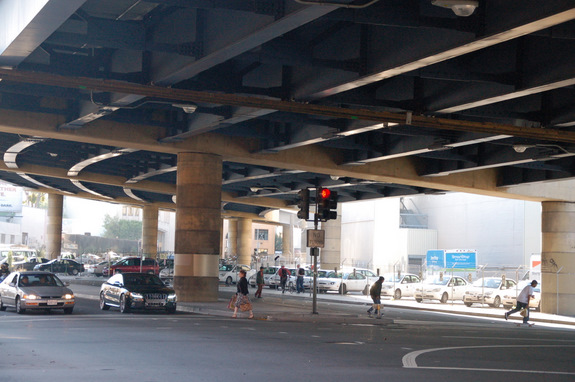Note: GJEL Accident Attorneys regularly sponsors coverage on Streetsblog San Francisco and Streetsblog California. Unless noted in the story, GJEL Accident Attorneys is not consulted for the content or editorial direction of the sponsored content.
"Can we take a moment to yell and celebrate Prop. J?" asked ARUP's Kate White at a panel discussion Thursday afternoon at SPUR's Urban Center in downtown San Francisco about germinating plans to remove 101 and the remaining stub of the Central Freeway. The packed house let out a big cheer in response.
To White, the victory in Golden Gate Park was a turning point in the long fight between freeway builders and the generations of San Franciscans who have fought to stop and, in some cases, successfully tear down freeways that carve up and pollute the city. "There were plans for freeways to cut through Golden Gate Park and the Panhandle in the 1950s. A lot did get built, including the Embarcadero Freeway," she said. But that huge double-decker monstrosity that blocked the ferry building and the waterfront was torn down after the 1989 Loma Prieta earthquake, all thanks to previous generations of activists.

In this latest round of the ongoing battle, engineers have to make a decision about the remainder of the Central freeway and 101 from Cesar Chavez to 5th. The sections are so old they need retrofitted or removed. In comes the "Reconnecting Communities Pilot Program” that's part of the Federal Infrastructure Bill. "I’ve never seen the kind of leadership we’re seeing at the federal level to try and redress some of the injustices of our [freeway] infrastructure," said White.
This infrastructure, explained Teresa Jan of Multistudio, mostly followed redlining maps and divided communities by race and socio-economic status. "Freeways deeply impact home ownership to the present day," she said. "The constant flow of the traffic ... is the main source of noise pollution to the adjacent neighborhoods. It contributes to tinnitus, cognitive impairment ... and other preventable health problems including bronchitis, emphysema, abnormal heart rhythm, congestive heart failure, stroke."

In addition to eliminating or significantly mitigating those problems, ripping out the three miles of the Central Freeway and 101's 200-foot right of way could, all together, make space for some 13,000 new homes, explained Perkins & Will's Geeti Silwal.
Whatever happens would be subject to extensive community engagement, explained the panelists. But Jan presented one interesting idea--rather than tearing down the freeway entirely, the elevated portions could be partially ripped down to let light through and remove the barrier effect. Enough of framework could be retained, however, to create a linear park with intersection-free bike and walking paths. "Perhaps at grade there would be light rail and green space."
What about the motorists who currently use 101? White explained that with the freeways left-and-right-side ramps, the current design is a mess. A simpler configuration of a straighter, underground freeway, with two lanes only in each direction, tunneled through Potrero Hill, would work better. Another option might be some combination of surface-level boulevards for local traffic, but "It’s currently not working for anybody," she said, acknowledging that studies are needed.
Silwal explained that removing these freeways can help change San Francisco's car-focused culture and create a much healthier environment. "The infrastructure that our city embeds determines choices and behaviors, which determines lifestyles. Lifestyles determine the health of people, the city, and the planet," she added.
In other words, if you build for cars, you get a noisy, polluted, congested car culture. If you build for bikes, walking, and transit, you just get a healthier city with healthier people.

"I think with prop J passing," said White, "There’s finally consensus that we don’t want to be an auto-dominated city."
For more events like these, visit SPUR’s events page.





